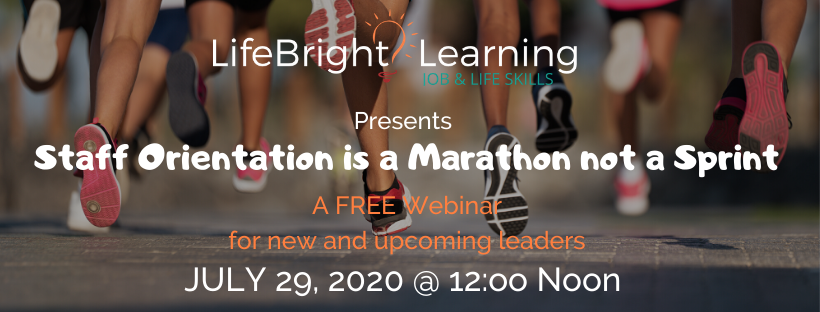How valuable are employees to your organization? In nonprofit agencies, staff and volunteers are the most valuable part yet, nearly 33% of new hires look for a different job within their first six months on the job.
In addition to turnover being expensive, it impacts the morale of your team. It also indicates that change is required to increase employee commitment early on.
We must focus on keeping our best employees, and their first impression of leadership, and the organization will determine how they feel about the job. In fact, 69% of employees are more likely to stay with a company for three years if they have positive and memorable hiring and orientation experience, so consider stepping up what you are doing by:
Adding Variety
The first few days for a new employee is often full of paperwork, so mixing in a variety of other activities will help so consider:
- Take them on a tour of your office and introduce them to everyone.
- Assign a mentor to each new hire as “go to support” for questions, requests, and information.
- Invite them out to lunch.
- Send out a series of welcome emails, explaining different aspects of the organization, and highlighting your other team members.
- Give them the opportunity to provide input and feedback to a project, so they feel engaged and part of the team.
Continuing the Education Process
For new hires to truly feel connected with your organization and their new job, they need to have a clear understanding of their role, the organization’s practices, your expectations, and the team’s engagement.
Educate new hires on what sets your organization apart, and passionately portray your purpose and their importance in achieving success. Try doing this in different ways such as videos, interactive training, and one-on-one information sessions; making it meaningful and fun.
Get away from what you have always done and get creative. For example, a treasure hunt that takes staff throughout the services and connects them with their internal network can be fun, educational and team building. Orientation tends to educate staff only on their program, resulting in ‘silos’ and an us-them way of thinking. The more staff know about other programs, the more they can promote services, make connections and establish their network of support.
Being Friendly, Helpful and Interested in Your New Hires
Make sure supervisors know the expected outcome of orientation and provide the necessary resources such as sufficient time and an adequate budget. I know, easier said than done. However, how much does it cost to rehire the same positions every six months?
The relationship between staff and supervisor is the key to longevity. Small things make a big difference so pay attention to what you learn about them and find ways to show you care. Remember their birthdays, encourage their passions, know the names of their children and spouse, and celebrate their successes whether personal or professional. It will pay off since 40% of employees who don’t feel meaningfully recognized will not go above their formal responsibilities.
With these areas of focus during orientation, you will reduce turnover, improve morale, and wisely invest your limited resources.
Stay tuned next week for more on Staff Orientation

Please join me for my FREE webinar on July 29 @ 12 Noon MST Called “Staff Orientation is a Marathon, Not a Sprint”

